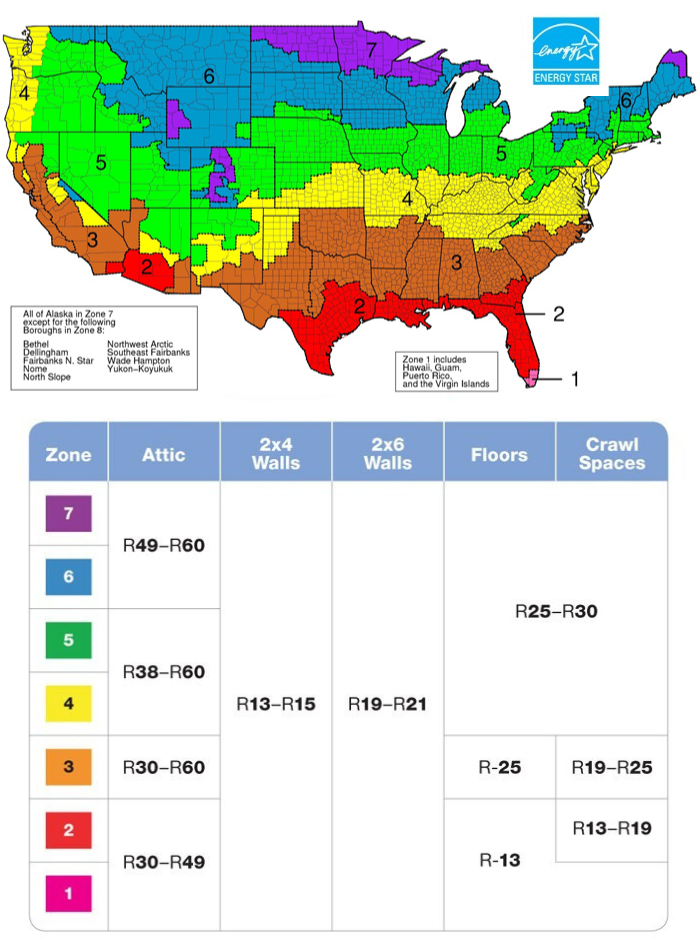What is R-Value?
Contents
R-Value measures the effectiveness of insulation material’s thermal resistance. The higher the R-Value, the better the material insulates by slowing down the transfer of heat.

The R-value is a measure of thermal resistance, which indicates how well an insulation material can resist heat flow. The higher the R-value, the more effective the insulation is at preventing heat transfer, which is essential for maintaining a comfortable indoor temperature and reducing energy costs. R-values are determined under specific test conditions and are used to compare the insulating efficiency of different materials or assemblies, such as walls, ceilings, or windows.
Temperature difference per unit of heat
The R-value is expressed as the temperature difference per unit of heat flux needed to sustain one unit of heat flux between the warmer and cooler surfaces of a barrier. In practical terms, this means that insulation with a higher R-value will do a better job at keeping heat inside a building during winter and outside during summer. The R-value is additive for layers of materials, meaning that if you layer multiple insulating materials, their R-values combine to provide greater insulation power.

U-factor or U-value
The U-factor or U-value is the inverse of the R-value and represents the overall heat transfer coefficient of a building element. A low U-value (or high R-value) indicates high levels of insulation and better resistance to heat transfer. The R-value is crucial for predicting the composite behavior of an entire building element rather than relying on the performance of individual materials.
| Insulation Material | R-Value per Inch |
|---|---|
| Closed Cell Spray Foam | R-6 to R-7 |
| Foam Board | R-4.5 to R-5 |
| RetroFoam Injection Foam | R-4.6 to R-5 |
| Open Cell Spray Foam | R-3.6 to R-3.9 |
| Cellulose (Loose-Fill) | R-3.1 to R-3.8 |
| Fiberglass (Batts) | R-2.9 to R-3.8 |
| Fiberglass (Loose-Fill) | R-2.2 to R-2.9 |
| Rock Wool Batt | R-3.14 |
| Rock Wool Blown (attic) | R-3.10 |
| Rock Wool Blown (wall) | R-3.03 |
| Cellulose Blown (attic) | R-3.13 |
| Cellulose Blown (wall) | R-3.70 |
| Vermiculite | R-2.13 |
| Air-entrained Concrete | R-3.90 |
| Urea terpolymer foam | R-4.48 |
| Rigid fiberglass (> 4 lb/ft³) | R-4.00 |
| Expanded Polystyrene (beadboard) | R-4.00 |
| Extruded Polystyrene | R-5.00 |
| Polyurethane (foamed-in-place) | R-6.25 |
| Polyisocyanurate (foil-faced) | R-7.20 |
These values are typical for the materials listed and can vary depending on the specific product or manufacturer. It’s important to consult with manufacturers or professionals for the most accurate and current R-values when planning insulation for a building project[2][5][8].
Citations:
[1] https://www.w3schools.com/r/r_data_types.asp
[2] https://www.ahfc.us/iceimages/manuals/building_manual_ap_1.pdf
[3] https://www.programiz.com/r/data-types
[4] https://en.wikipedia.org/wiki/R-value_%28insulation%29
[5] https://www.retrofoamofmichigan.com/blog/what-is-the-highest-r-value-insulation-ratings/types/charts
[6] https://swcarpentry.github.io/r-novice-inflammation/13-supp-data-structures.html
[7] https://www.homedepot.com/c/ab/insulation-r-values/9ba683603be9fa5395fab9091a9131f
[8] https://www.archtoolbox.com/r-values/
